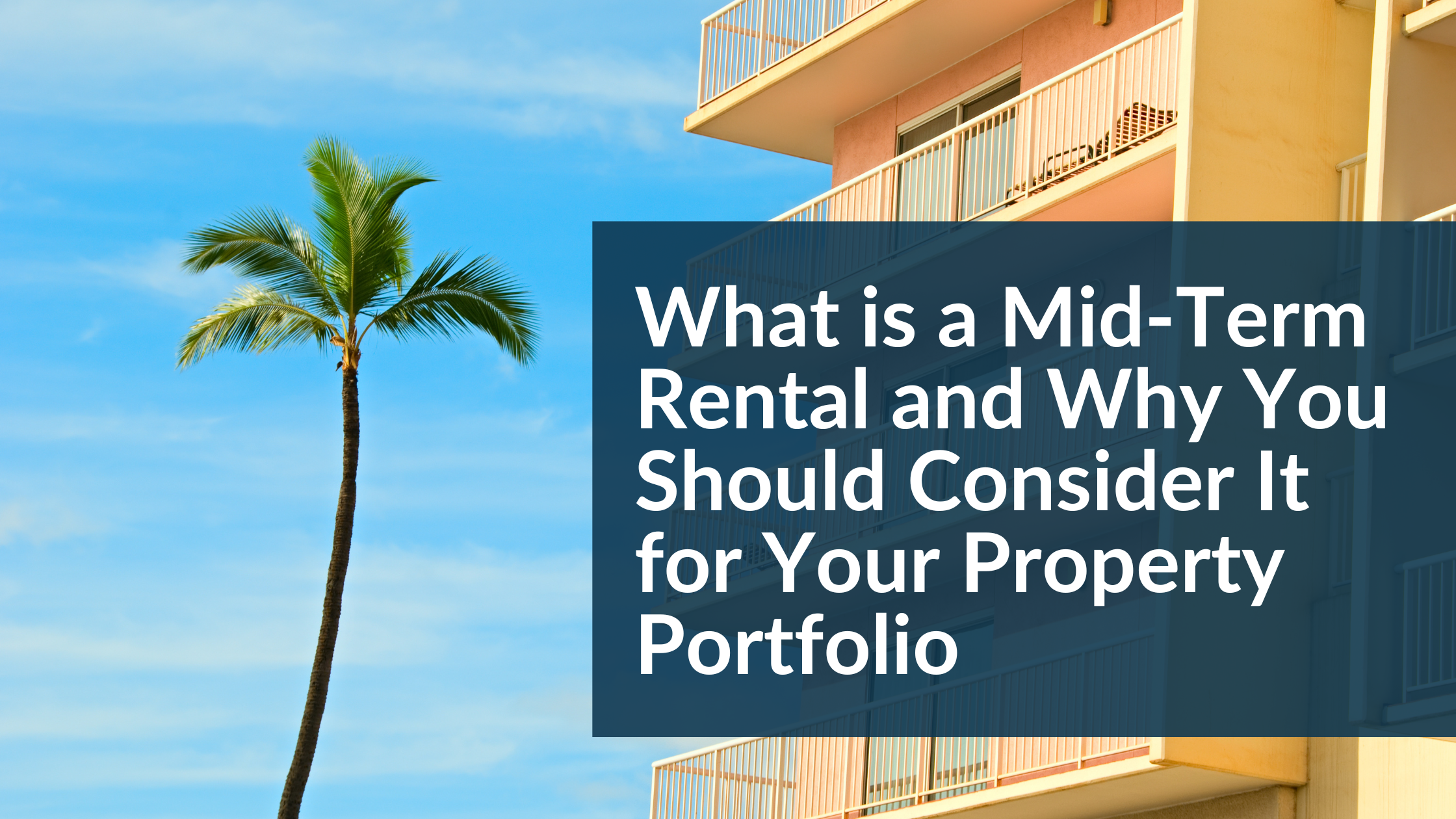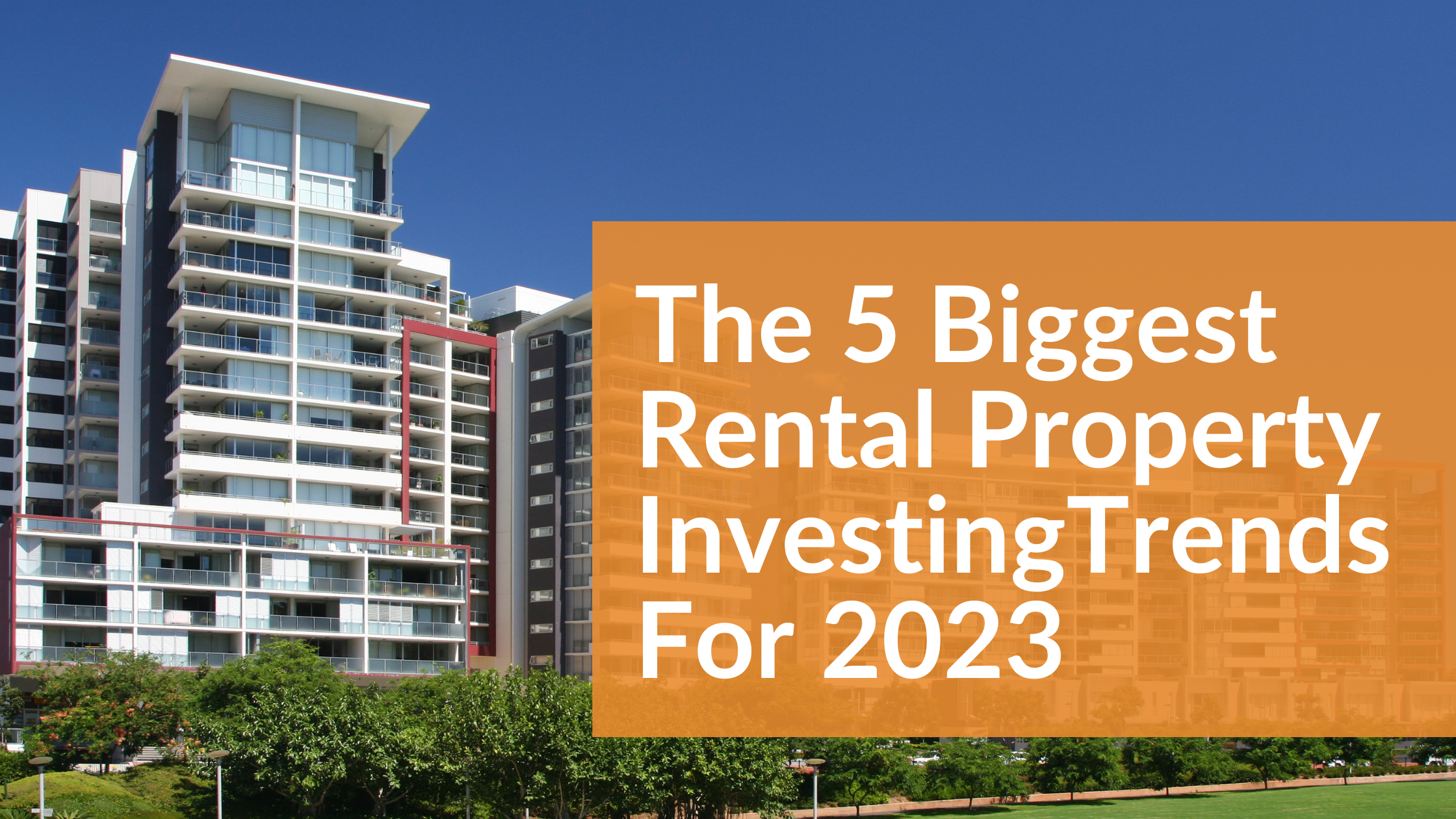What is a Mid-Term Rental and Why You Should Consider It for Your Property Portfolio

Finding the optimal method of portfolio diversification can be challenging due to the wide variety of available investment vehicles. Some investors favor Airbnb-style short-term rentals, while others prefer a more traditional long-term approach. Nonetheless, there is another option that has been less popular in the past but is quickly expanding as investors realize a new and lucrative opportunity: short- to medium-term rentals. This emerging market has a lot of potentials because it combines the best features of short-term rentals and housing for long-term tenants. What follows are the keys to long-term success in investing in rental property.
The ins and outs of various rental options
Rental properties are classified into three types: short-term, mid-term, and long-term rental property investments.
Short-term rentals
Short-term rentals, also known as vacation rentals, are any rentals that are used for thirty days or less. These rentals are most common among tenants who are visiting a specific location, doing business travel or short-term job placements, or who require temporary housing in a new location.
Mid-term rentals
Mid-term rentals are those that can be occupied for a longer period of time, typically between one month and one year. Mid-term rentals are very versatile since, unlike long-term rentals, they typically arrive fully equipped and ready for tenants. The majority of tenants stay for three to nine months, making them ideal for travelers who need a short-term residence but will be in town for more than a few weeks.
Long-term rentals
In general, people who intend to remain in one place for at least a year should look at long-term leases. Many real estate investors can only afford to buy apartments with standard 12-month leases, but those who are willing to be more flexible stand to make a lot of money.
Why Short-Term Rentals Are Becoming So Popular
Mid-term rentals are typical in countries where people move around frequently or take long trips of several months' duration, but the concept is still relatively unfamiliar in the United States. Short-term leases of more than a few weeks or months are generally disregarded by both tenants and investors. Nevertheless, this neglect masks a rich opportunity: the short-term rental market is rapidly expanding, and those who get in at the ground level may reap substantial financial rewards. It's no secret that property owners get several rewards.
For starters, given the novelty of the idea, there is potential for ambitious financiers to expand. Mid-term rentals are still growing, especially in densely populated places like New York, which is where services like Airbnb have reached saturation. Less competition equals more opportunities to advertise to in-need tenants.
Rental prices for short-term rentals tend to be higher than those for longer stays, which is great news for investors who are sick of the constant churn that comes with holiday rentals but who don't want to commit to having someone live in their property full-time for several years. Mid-term rentals can charge up to $1,200 per month in a city where the average monthly cost of a one-bedroom apartment is $1,000 on the long-term rental market and $1,500 on the short-term rental market. This is because they are not subject to the ebb and flow of the short-term rental market, which relies on a steady stream of tenants.
Investors may find short-term-rental-like returns in regions where the market for longer-term leases is only getting started. When the supply of suitable short- to medium-term rental options is low, even a somewhat high asking price may be enough to attract interested parties.
Who is mid-term housing intended for?
The appeal of mid-term housing, particularly for enterprising investors, is widespread. While many residents will continue to seek traditional long-term rentals, mid-term rentals can appeal to a wide range of people, including those who aren't fans of the exorbitant rates that short-term rentals can command. The mid-term rental market is ideal for the following purposes:
- Students- Many college students only live on campus from August to May, returning to their hometowns in the summer. As a result, signing a long-term lease can be a waste of money. Mid-term rentals may be more appealing, even if the monthly rate is higher. A nine-month rental at $1,100 per month will cost $9,900 in total, compared to $12,000 for an annual lease at $1,000 per month.
- Tenants Moving to a New City- Individuals who are relocating to a new city require a temporary place to call home, whilst those who are apartment shopping are ideal candidates for short-term rentals. This is especially true in New York City and the San Francisco Bay Area, where it is nearly impossible to secure a long-term rental without being physically there. Mid-term rentals give stability without the need to go from one short-term rental to the next, while yet allowing for flexibility for individuals who find a place quickly.
- Corporate Housing- Consultants, public accountants conducting company audits, and seasonal workers are just a few examples of the transient workers that many businesses use. Short- and medium-term rentals are ideal for addressing business needs, and establishing connections with local businesses can lead to consistent sales.
- Homeowners In-Between Transactions- Sometimes it's easier to buy than to sell, depending on the situation of the real estate market. It is possible for homeowners to spend some time in limbo between homes if the market is really hot and they need to sell quickly, or if the converse is true. A cheap somewhere to stay while bargaining is on the horizon is now within reach thanks to the availability of mid-term rentals.
Possible Lease Conditions and Selections
There are a variety of lease structures available to landlords who wish to enter the mid-term rental property investment market. There are many, but the most common are:
- Term Lease- Being the most common kind of rental arrangement, a term lease commits both parties to terms that are set in advance. Mid-term leases typically range from three to nine months in length but can be adapted to suit your needs or set as a standard. Having the option of a conventional lease that they are familiar with and understand can provide tenants with a sense of security, as these leases are the most frequent across long-term rentals.
- Month-to-month- Month-to-month leases, as the name suggests, are renewed on a monthly basis rather than at the end of the lease term. Tenants may find more freedom in such arrangements, while landlords have a legitimate justification for increasing rents. Tenants are typically aware of the expense of convenience and are willing to pay more in exchange for the freedom to relocate at any time. This is especially true for tenants who are actively looking for a more permanent residence.
Depending on your real estate investment plan, you can either offer tenants a variety of lease terms to pick from or stick with a single form.
Transitioning from investing in short-term to mid-term rentals
Some who have been attached to the concept of short-term rentals may find it difficult or even risky to consider alternatives. For many, though, the inverse will be the case when it comes to real estate investments. Mid-term leases, on the other hand, can be a key to greater financial success and a more promising future. Because of this, switching to properties with a mid-term lease could be a good option for you.
Same benefits, but less turnover
Many of the benefits of short-term rentals are also present in mid-term rentals, but the high turnover rate typical with holiday rentals is absent. Considering the various advantages and cheap costs associated with renting for longer periods (some of which are stated below), it may be worthwhile to consider doing so.
Better Tenants
Tenants who aren't planning to stay for more than two weeks due to a vacation are a better bet. Mid-term rentals can have many of the same protections as long-term properties, but in short-term rental situations, there is usually less background screening because no one wants to perform a credit check only to go to the beach. This may involve things like a confirmation of employment or income, a credit check, a background check, or a certified check.
Rent payments that are more reliable
Many different options are available for short-term rentals. A string of successful months can suddenly become a string of empty weeks. Since renters of a mid-term rental are more likely to be settled in for an extended period of time, the risk involved in collecting rent up front, as well as the security deposit and first month's rent, is lower.
Less need for oversight and upkeep
There is a substantial reduction in management duties when there is no need for frequent deep cleaning between guests. Constant cleaning and maintenance for vacation rentals can eat into earnings.
Fill in off-season voids
Have second thoughts about forgoing premium pricing just because it's the holiday season? You don't have to. Many investors use a short-term business model during peak seasons and a mid-term leasing strategy during off-peak times. This will ensure steady income throughout the year without the hassle of accommodating transient guests during slow seasons.
Which investors will thrive with mid-term rentals?
Mid-term rentals are a viable option for investors of all types, however, some regions and rental approaches are more likely to yield returns than others. Here are some of them:
- Rental property owners in resort communities can benefit from both short- and long-term leases by switching to and from the former during peak seasons.
- Premises in close proximity to major employers or those that regularly bring in temporary workers are more likely to attract tenants from reliable sources.
- Investors who don't want the commitment of long-term leases yet are sick of the headaches of short-term rentals
Success Strategies for the Middle of Your Rental Term
If you're prepared to invest in the mid-term rental market, the appropriate strategy is essential. Follow these guidelines and you'll be off to a flying start.
Properly equip your home
If you're trying to rent out a room, owning a room alone might not be enough to compete in a rising mid-term market. Make sure your rental building has all the features that tenants are looking for, such as a video doorman in high-traffic areas where safety may be an issue. You should always strive to exceed expectations.
Make it feel like you're at home
Nobody settles into a vacation rental like it's a new home, but with mid-term rental property investments, that mindset shifts. With tenants staying for up to a year, you'll want to do everything you can to make them feel safe and at ease. This can include comprehensive furnishings, quality mattresses, quality linens, and appropriate decor - in short, everything you would expect to find in your own home.
Additional Costs
While managing a mid-term rental is typically less of a hassle for a landlord than a short-term one, there are still factors to take into account. In long-term rentals, the costs associated with things like cleaning between tenants, conducting credit checks less frequently, and advertising the property more frequently when it is vacant build up less dramatically. On top of that, think about:
- Wi-Fi and Streaming/TV costs
- Higher utility costs
- Pool and general housing maintenance such as lawn care
Learn to market the property
Don't just publish photographs of the property online and hope you have tenants; show them that you care about their requirements and will do what it takes to accommodate them. Things to keep in mind include the availability of basic necessities like groceries and healthcare, as well as conveniences like public transit and job prospects.
Know the laws
Landlord responsibilities are highly influenced by local law, as they are with any property investment. Before renting out an investment property, make sure you understand the necessary steps and consult a real estate attorney if you have any questions.
Ensure exposure on short- and long-term rental websites
You should also make sure that you can be found on more niche websites like Zillow, which cater only to people looking to buy or rent a house for an extended period of time. You can reach tenants looking for rental properties like yours by posting ads on websites like Sublet.com (which goes beyond true subletting), Leasebreak (which advertises mid-term sublets for those who don't want to break a lease), and Short Term Housing (don't let the name fool you—the offerings are largely mid-term).
Whether mid-term rentals are a new and intimidating market for you, or you've been looking for a promising alternative to short-term vacation rentals, entering this exciting market can be viable - and profitable! - real estate investment strategy.
Looking at obtaining a rental property for this purpose? Our team here at Nvestor Funding can help. Feel free to submit the details of your loan through our online intake form by clicking Apply Now.



